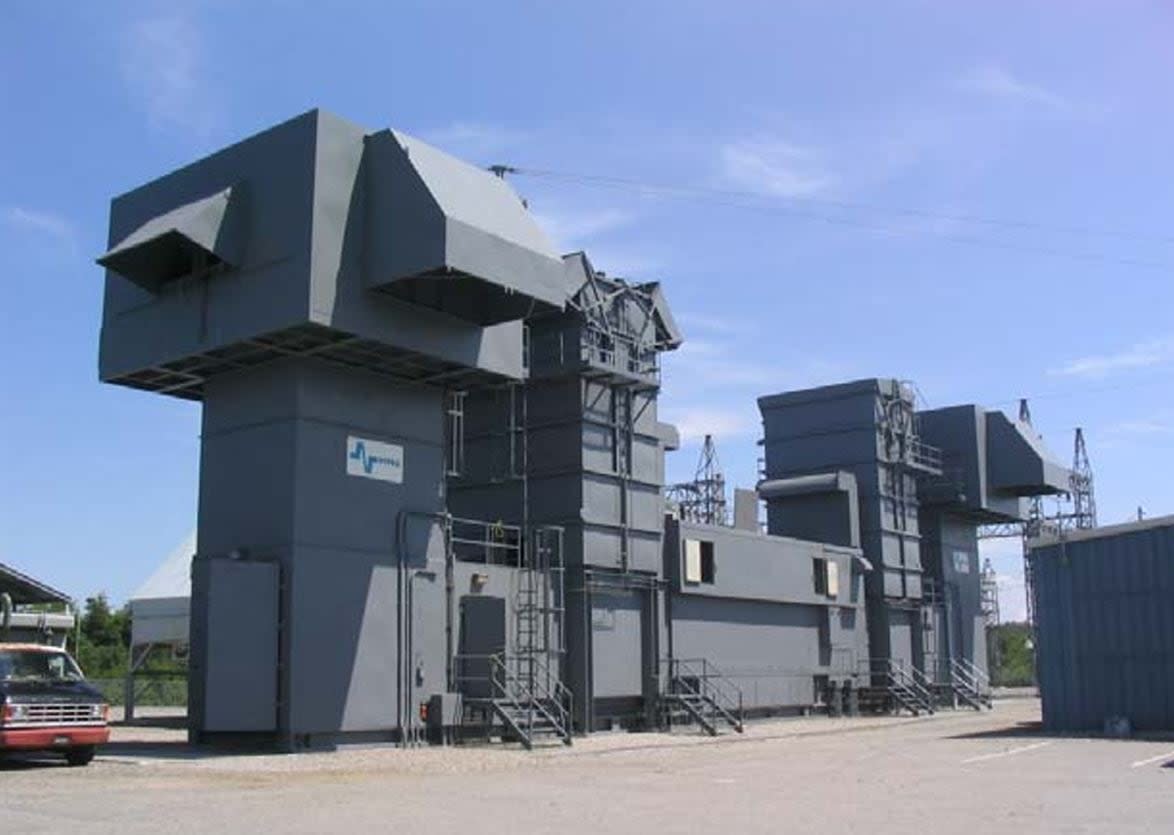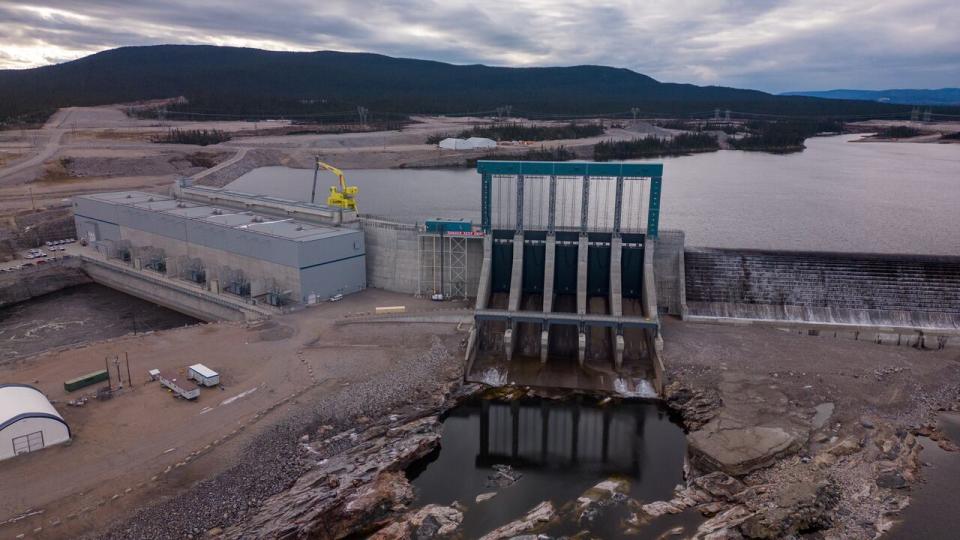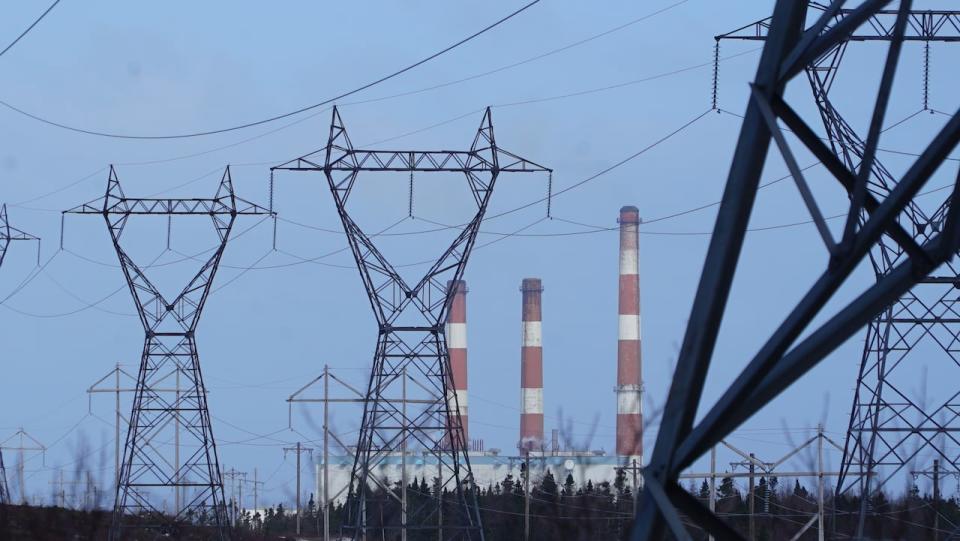Diesel-burning Stephenville plant won't be retired in 2024

Newfoundland and Labrador Hydro says the aging, diesel-burning Stephenville gas turbine will not be retired in 2024, given ongoing reliability concerns elsewhere on the provincial power grid and a projected upswing in electricity demand.
In fact, Hydro can no longer say when the plant will be decommissioned, according to the Crown corporation's latest near-term reliability study.
"In light of a combination of factors, Hydro is recommending the continued operation of the Stephenville gas turbine beyond 2024. At this time, a recommended revised retirement plan has not been concluded," reads a footnote in the report, filed to the Public Utilities Board on Nov. 15.
The study notes a decision on the future of the 50-megawatt plant, in operation since 1975, will be made by next spring.
Reliability concerns for LIL, Holyrood plant
The 51-page document highlights reliability concerns regarding several Hydro assets, notably the Labrador-Island Link (LIL) — the power lines linking the 824-megawatt Muskrat Falls plant to Newfoundland customers — which has experienced repeated failures during the last two winters.
Hydro has launched four years of enhancements to the LIL — $28 million in work designed to strengthen the 1,100-kilometre system and promising to reduce the risk of major outages — but "multiple years of operational experience" will be needed to fully assess the system's performance and reliability, according to the report.

The Muskrat Falls project on the Churchill River, in Labrador, in November 2023. (Danny Arsenault/CBC)
Meanwhile, one of the three units at the 490-megawatt Holyrood thermal generating station is offline until March. A number of Hydro's assets, including Holyrood, which began operating in 1971, are nearing the end of their expected life and are therefore at greater risk of failure, notes the report.
"It is noted that the majority of the Holyrood TGS assets are over 40-50 years old; increased age can result in increased service failures. Recent age-related failures have been experienced on the boilers, turbines and electrical equipment at Holyrood TGS," the document reads.
A full-strength test of the LIL — which, while commissioned, is currently operating at about 75 per cent of its 900-megawatt capacity — has been pushed to the end of the winter to avoid a botched attempt leading to a Muskrat Falls outage while Holyrood isn't operating at full strength.
Adding to the pressure on the system, Hydro believes electricity demand could soon surge due the increasing electrification of vehicles and heating systems. Several potential wind-to-hydrogen-to-ammonia megaprojects in Newfoundland could also seek to tie in to the provincial grid, further increasing demand.
The reliability study projects peak electricity demand in Newfoundland and Labrador will increase steadily to 2338 megawatts by 2028, a four per cent increase over the 2024 projection of 2249 megawatts.
Stephenville plant undergoes major repairs
While Hydro is recommending keeping the Stephenville gas turbine beyond 2024 due to what the report calls its "positive performance," the plant has been out of service since last July due to a problem affecting an alternator's cooling fan.
Equipment at the peaking plant, which operates primarily in winter, had to be sent to the United States for repairs, with work beginning Oct. 28, according to the report.

Powerlines link the aging Holyrood thermal generating station to the provincial electricity grid. (Patrick Butler/Radio-Canada)
"The work to safely assess the unit's condition and return it to reliable service is ongoing and has been proceeding on schedule. We expect the unit to be back online in the first quarter of 2024, tentatively February," Hydro spokesperson Jill Pitcher wrote in an email Monday, adding the repairs are estimated to cost $4.6 million.
Despite Hydro's continued reliance on fossil fuel-burning plants to meet electricity demand at peak times, and at all times in several remote communities, nearly 92 per cent of the electricity delivered to homes in the province came from renewable sources in 2022.
Pitcher said the Stephenville gas turbine is a "backup unit and only made available when required" and that in 2022 it generated electricity for just 39 hours, producing about 800 tons of CO2.
Several diesel-burning plants see life extended
The Stephenville gas turbine isn't the only Hydro-operated power to see its life unexpectedly extended. Holyrood, the province's second biggest industrial polluter, was originally intended to close once Muskrat Falls came online. Paradoxically, it now has to operate until at least 2030, acting as a backup if the Muskrat Falls plant or transmission system falters unexpectedly.
Similarly, the Hardwoods gas turbine, a diesel-burning plant in Paradise, was expected to close in 2022.
It will now continue to operate until at least 2030, according to a quarterly report Hydro released in July.
In that same generation report, Hydro hinted that the Stephenville plant was "being considered for operation beyond 2024 in light of anticipated load growth and recent positive performance."
Download our free CBC News app to sign up for push alerts for CBC Newfoundland and Labrador. Click here to visit our landing page.


